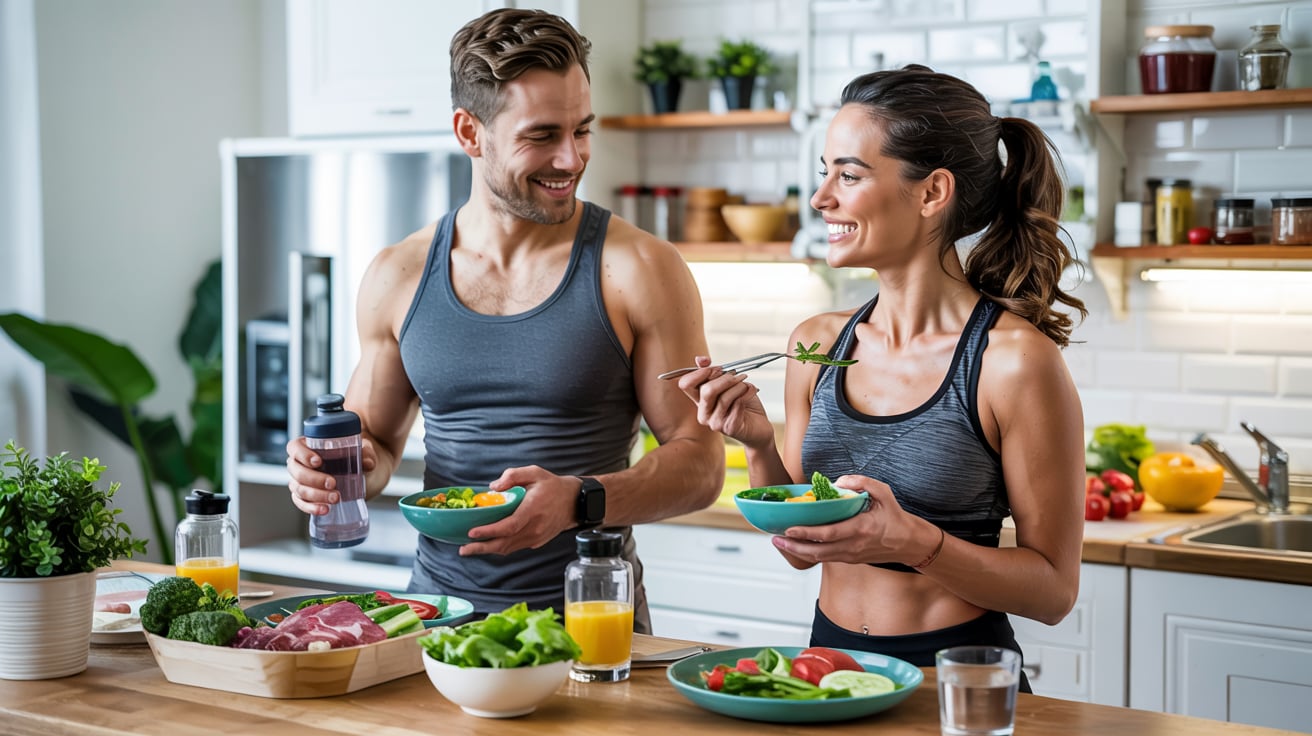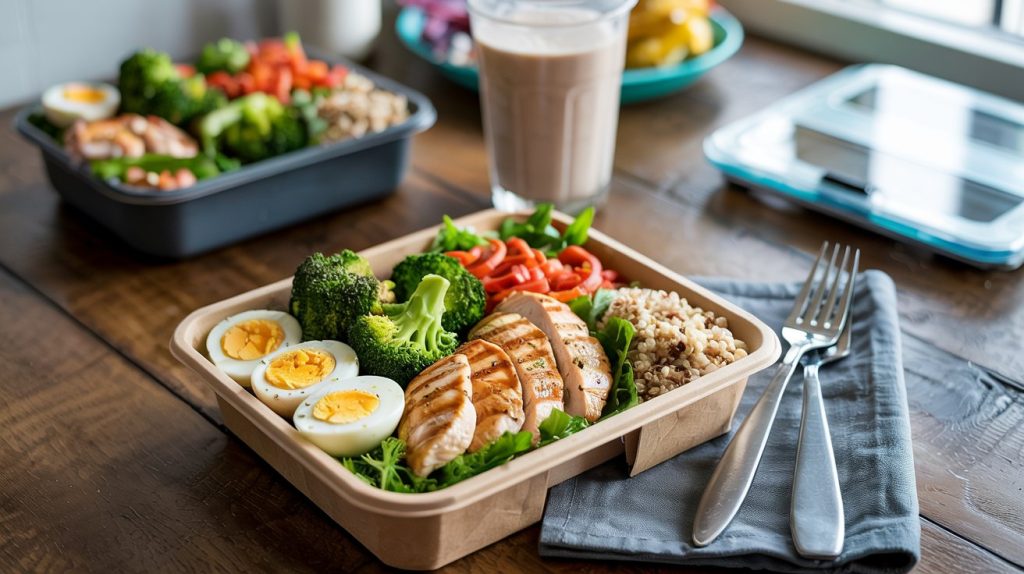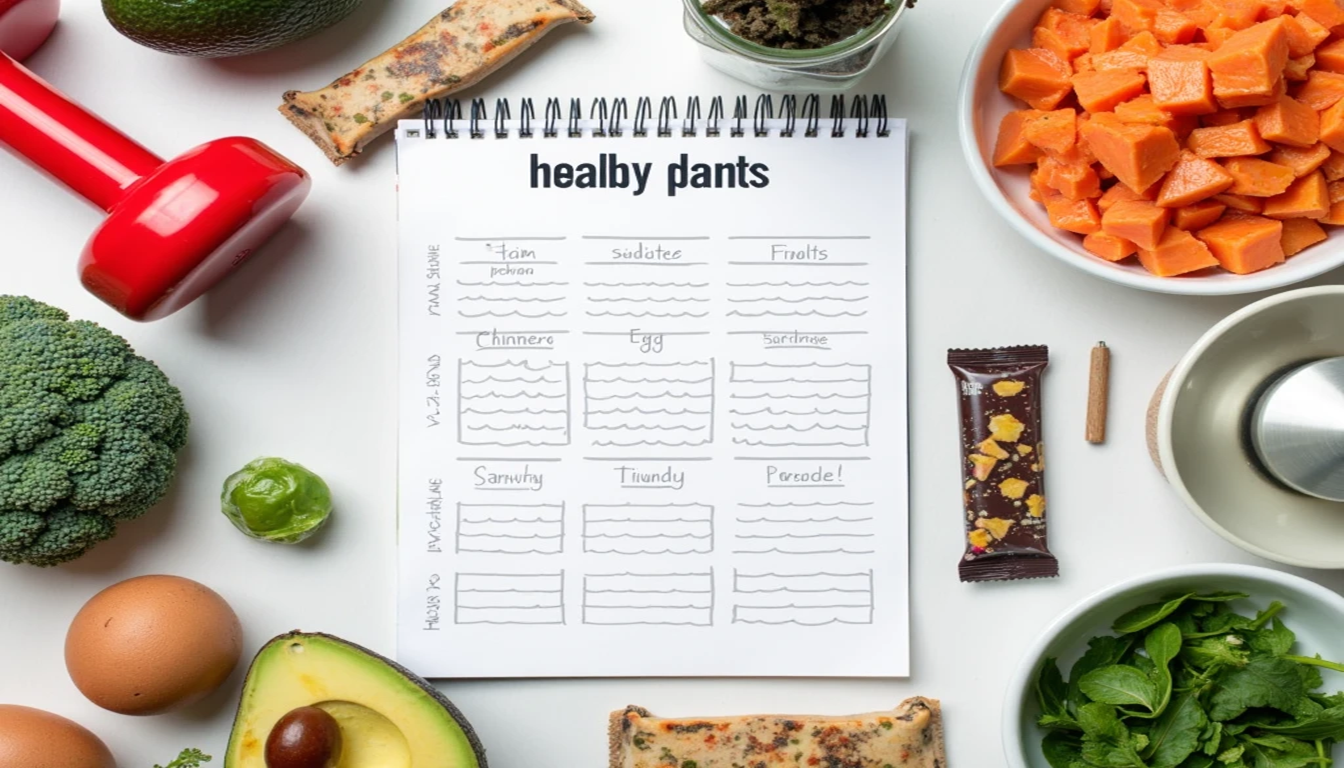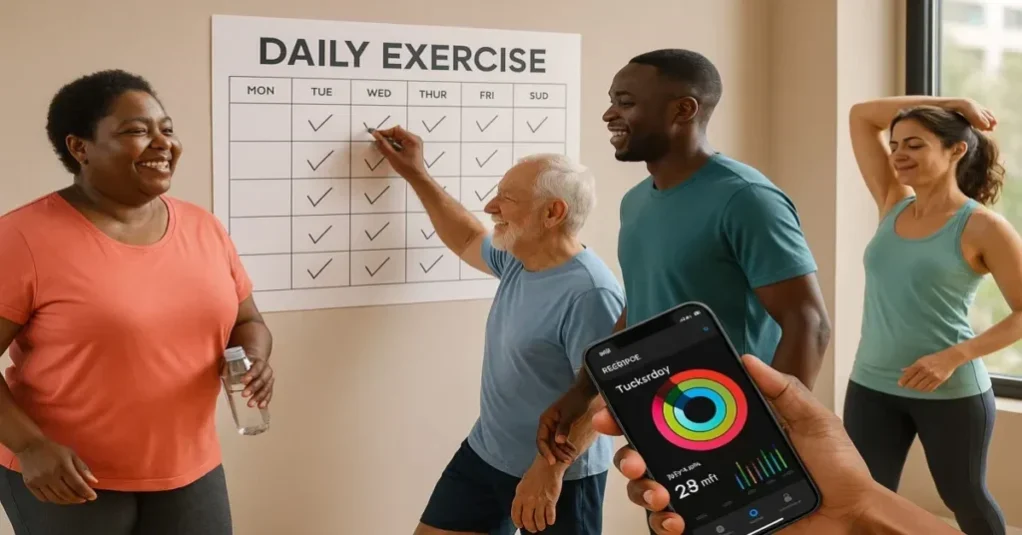
You Can Lose Fat and Gain Muscle at the Same Time
Yes, it’s possible to tone up and slim down simultaneously—a process known as body recomposition. As Dr. Creel from the Cleveland Clinic explains, “Despite the zeitgeist that well-trained individuals cannot gain muscle mass and lose fat simultaneously, there have been many chronic randomized controlled trials demonstrating body recomposition” theproof.com+8health.clevelandclinic.org+8health.com+8. Science supports it, but success hinges on smart diet, resistance training, and consistency.
The Science Behind Body Recomposition
Body recomposition reshapes your body’s fat-to-muscle ratio without significantly altering overall weight healthline.com. Healthline emphasizes pairing a high‑protein diet with strength training at least twice weekly healthline.com+1verywellhealth.com+1. Veteran bodybuilders have shown that around 2.5 g protein/kg/day helps drive recomposition tandfonline.com+15themusclephd.com+15researchgate.net+15.
Why Diet Is Your Superpower
Before we dive into the nitty-gritty, let’s chat about why food is your MVP here. Exercise builds the muscle, sure, but your diet? That’s what powers the whole operation. To lose fat, you need a calorie deficit (burning more than you eat). To gain muscle, you need enough protein and energy to repair and grow those fibers you’re working so hard in the gym. The trick is balancing these goals without feeling deprived—or like you’re eating chicken and broccoli 24/7. Ready to make it happen? Let’s go!
Macronutrients: Your Power Trio
Protein: Aim for 1.6–3.3 g/kg/day, targeting around 35% of daily calories from protein, per Health.com health.com. Protein preserves and builds muscle.
Carbohydrates: Fuel workouts with complex carbs—oats, millet, sweet potato.
Fats: Support hormone health, especially testosterone. Avoid low-fat extremes—men on low-fat diets saw decreased testosterone in meta-analysis themusclephd.com+2healthline.com+2happiesthealth.com+2arxiv.org.
Nail Your Calorie Sweet Spot
First things first: calories. They’re not the enemy—they’re your fuel! The key is finding the right amount for you.
- Calculate Your Baseline: Figure out your maintenance calories—how much you’d eat to stay the same weight. Online calculators can help (just plug in your age, height, weight, and activity level). For most folks, it’s around 2,000-2,500 calories a day, but it varies.
- Create a Mild Deficit: To lose fat, eat about 300-500 calories less than maintenance. This keeps you in fat-burning mode without starving your muscles. If you’re super active, lean toward the smaller deficit (300) so you’ve got energy to lift.
- Track It: Use an app like MyFitnessPal for a week or two to get the hang of it. No need to obsess forever—just enough to eyeball portions.
Don’t worry if this feels like math class—we’re keeping it simple. The goal? Lose fat slowly (0.5-1 pound a week) while keeping muscle-building power on deck.

Pump Up the Protein
Protein is your muscle’s best buddy—it repairs those tiny tears from lifting and helps them grow stronger. Plus, it keeps you full, which is clutch for weight loss.
- How Much?: Aim for 0.8-1.2 grams of protein per pound of body weight. If you’re 150 pounds, that’s 120-180 grams a day. Spread it across meals for max benefits.
- Top Picks: Lean chicken, turkey, fish (like salmon or cod), eggs, Greek yogurt, cottage cheese, and tofu if you’re plant-based. Whey protein shakes are a quick win too.
- Timing: Don’t stress about “protein windows”—just get it in throughout the day. A post-workout shake or meal is a nice bonus, though.
Think of protein as the building blocks for your dream physique. Load up, and your muscles will thank you.
Don’t Fear Carbs (Choose Wisely)
Carbs get a bad rap, but they’re your energy source for crushing workouts and recovering like a pro. The trick is picking the right ones.
- Go Complex: Swap white bread and sugary snacks for slow-digesting champs like sweet potatoes, brown rice, quinoa, oats, and whole-grain pasta. They keep your energy steady and your hunger in check.
- Timing Matters: Eat most of your carbs around your workouts—before for fuel, after for recovery. A bowl of oats pre-gym or rice with dinner post-lift works wonders.
- Portion It: About 40-50% of your calories can come from carbs, depending on your deficit. For a 2,000-calorie day, that’s 200-250 grams.
Carbs aren’t the enemy—they’re your workout wingman. Embrace them smartly, and they’ll power your gains.
Make Friends with Healthy Fats
Fats aren’t just for flavor—they’re key for hormones (like testosterone, which helps muscle growth) and keeping you satisfied.
- How Much?: Aim for 20-30% of your calories from fat. On 2,000 calories, that’s 45-65 grams.
- Best Sources: Avocados, nuts (almonds, walnuts), seeds (chia, flax), olive oil, fatty fish, and even a little dark chocolate (yes, really!).
- Avoid Junk: Skip trans fats and limit fried stuff. Your body deserves the good stuff.
Fats are like the secret sauce—small amounts go a long way. Drizzle some olive oil on your veggies, and you’re golden.
Hydrate Like a Champ
Water might not sound sexy, but it’s a game-changer for weight loss and muscle gain. Dehydration tanks your energy, slows recovery, and can even make you hungrier.
- How Much?: Shoot for 3-4 liters a day (about 13-17 cups), more if you’re sweating buckets in the gym.
- Flavor It Up: If plain water bores you, toss in lemon, cucumber, or mint. Herbal teas count too!
- Pre- and Post-Workout: Sip during your session, and rehydrate after to help those muscles bounce back.
Think of water as your body’s VIP pass—it keeps everything running smoothly. Read also: https://healthsclinic.com/the-lifeline-of-hydration-drinking-more-water-daily
Local Foods That Power Results
Nigeria offers nutrient-rich, affordable foods that fit this plan:
- Beans (black-eyed, brown, cowpeas): High in plant protein; studies confirm legumes boost cardiovascular and muscle health com+3researchgate.net+3blog.nucleusisafrica.com+3blog.nucleusisafrica.com. Popular dishes include beans porridge, akara, and cowpea stews. 2. Egusi soup: Made from protein-rich seeds and often cooked with meat/fish. A top muscle-food choice
- Moi-moi & Okpa: Steamed bean puddings; potent protein sources (okpa ~17% protein) nucleusisafrica.com+1en.wikipedia.org+1.
- Fish & Kilishi: Grilled fish offers lean protein and omega-3s, while kilishi (dry spiced meat) makes a high-protein snack wikipedia.org.
- Groundnuts: Offer plant protein and healthy fats—a popular snack com+11blog.nucleusisafrica.com+11en.wikipedia.org+11.
- Ogbono soup & Fufu: Ogbono seed soup adds protein; fufu can complement protein-rich soups wikipedia.org.
Foods to Avoid
Africa’s nutrition transition is pushing processed, high-fat, and sugary foods into diets journalofethnicfoods.biomedcentral.com. Avoid soda, fried dough (puff-puff), excess palm oil snacks, and fast food. Read also: https://healthsclinic.com/how-hidden-sugars-sabotage-your-health
Sample 7‑Day Meal Plan (Local + Foreign Mix)
Day | Breakfast | Lunch | Snack | Dinner |
1 | Scrambled eggs + moi-moi | Grilled fish, veggies, boiled yam | Groundnuts | Egusi soup + fufu |
2 | Oats, yogurt, bananas, groundnuts | Beans porridge + plantain | Kilishi | Okpa + garden eggplant stew |
3 | Moi-moi & pap | Ogbono soup + fufu | Fruit + mixed nuts | Chicken & millet pilaf |
4 | Egg + avocado sandwich | Jollof rice + moi-moi | Greek yogurt + honey (imported) | Brown rice + fish stew with spinach |
5 | Smoothie (banana, protein powder) | Egusi soup + garri | Boiled cowpeas | Beans stew + sweet potato |
6 | Oatmeal with groundnuts & fruit | Salad+ grilled chicken & plantain chips | Plant-based yogurt + beans | Grilled tilapia + okra & rice |
7 | French toast + eggs | Moi-moi & veggie salad | Cottage cheese-style local yogurt | Beans porridge + kilishi |
Customize portions to satisfy ~maintenance calories. Prioritize protein each meal.
Meal Timing and Frequency
There’s no one-size-fits-all here, but how you space your meals can make your diet feel effortless.
- 3-5 Meals a Day: Some love three big meals; others thrive on five smaller ones. Pick what fits your life. The goal is steady energy and hitting your protein target.
- Pre-Workout Fuel: A mix of protein and carbs 1-2 hours before lifting—like a turkey sandwich or a protein shake with a banana—sets you up to crush it.
- Post-Workout Recovery: Within an hour after, grab some protein and carbs (chicken and rice, or a shake with oats) to kickstart repair.
- Intermittent Fasting?: If you like it, it can work—just squeeze your calories into your eating window. It’s not magic, but it suits some schedules.
The key? Consistency. Find a rhythm that feels good, and stick with it. Read also: https://healthsclinic.com/eat-your-way-to-stronger-immunity-power-foods-backed-by-science-and-culture
Supplements: Nice-to-Have, Not Must-Have
You don’t need supplements, but a few can give you an edge.
- Whey Protein: Perfect for hitting protein goals when you’re short on time. Mix with water or milk—boom, done.
- Creatine: A proven muscle booster. Take 3-5 grams daily (mix it in anything) for strength and recovery.
- BCAAs: Optional if you’re already eating enough protein, but they can help during fasted workouts.
- Multivitamin: Covers any nutrient gaps, especially if you’re cutting calories.
Keep it simple—whole foods are the star, supplements just play backup.
Treat Yourself (Smartly)
A diet you hate won’t last. Build in treats to keep it fun and sustainable.
- 80/20 Rule: Make 80% of your food nutrient-dense (lean meats, veggies, whole grains), and save 20% for fun—like pizza night or a cookie.
- Portion Control: Enjoy that burger, but maybe skip the extra fries. Fit it into your calories, and you’re guilt-free.
- Dark Chocolate: A square or two (70%+ cocoa) satisfies sweet cravings and sneaks in some antioxidants.
Life’s too short for misery diets. A little joy keeps you on track.
Pair It with Smart Training

Diet’s half the battle—training seals the deal. You don’t need to live in the gym, but consistency is key.
- Lift Heavy: Focus on compound moves (squats, deadlifts, bench presses) 3-4 times a week. Progressive overload (adding weight over time) builds muscle.
- Cardio for Fat Loss: Add 2-3 sessions of moderate cardio (20-30 minutes)—think brisk walking or cycling—to boost your deficit without burning out.
- Rest Up: Muscles grow when you recover, so sleep 7-9 hours and take rest days. Diet and rest are your growth partners. Read also: https://healthsclinic.com/improve-sleep-naturally-beat-insomnia-without-pills
Putting It All Together: A Sample Day

Let’s tie it with a bow. Here’s a 2,000-calorie day for a 150-pound person aiming for fat loss and muscle gain (adjust as needed):
- Breakfast: 2 eggs, 1 cup oatmeal with berries (40g protein, 60g carbs, 15g fat)
- Snack: Greek yogurt (1 cup) with 10 almonds (20g protein, 10g carbs, 10g fat)
- Lunch: Grilled chicken (6 oz), 1 cup quinoa, steamed broccoli (40g protein, 50g carbs, 10g fat)
- Pre-Workout: Protein shake with a banana (25g protein, 30g carbs, 5g fat)
- Dinner: Salmon (5 oz), sweet potato (1 medium), spinach salad with olive oil (35g protein, 40g carbs, 20g fat)
Total: ~160g protein, 190g carbs, 60g fat. Tweak portions to hit your numbers!
FAQs
- Can I build muscle in a calorie deficit?
Yes—especially if you’re new to training, maintain high protein, and do strength work . - How much protein do I need?
Aim for 1.6–3.3 g/kg/day (roughly 2–3 g/kg) or 35% of calories health.com. - Should I eat before/after workouts?
Yes—favor 20–30g protein and carbs before/after sessions . - Are carbs bad for fat loss?
No. Carbs fuel performance and recovery—choose complex ones like millet, oats, sweet potato. - How long until I see results?
Expect visible changes in 8–12 weeks—with consistent eating, training, and tracking. - Can women follow this diet?
Absolutely. Macronutrient and calorie needs differ slightly, but principles remain the same. - Which Nigerian foods are high in protein?
Beans, egusi, moi-moi, okpa, ogbono, fish, kilishi, groundnuts. - How often should I change meal plans?
Reassess every 4–6 weeks to adjust portions and variety. - Are supplements necessary?
No, but protein shakes, creatine, and omega-3s help convenience and performance. - Do I need to meal-prep?
It’s not essential but it massively boosts consistency—plan a few hours weekly to prep beans, grill fish, and cook soups.
Final Thoughts
Recomposition—losing fat while gaining muscle—is possible for Nigerians when you:
- Target maintenance calories with protein-heavy meals.
- Use local staples like beans, egusi, okpa, fish, and kilishi.
- Train smart with strength sessions and cardio.
- Prioritize sleep, stress reduction, and hydration.
This sustainable and effective approach reshapes your body and elevates health. Stick with it—your transformation awaits! Lets us know in the comments how your recomposition journey is going.
This post is for educational purpose only: therefore, consult your doctor before making any medical decisions.
Related Reading
RELATED POSTS
View all


